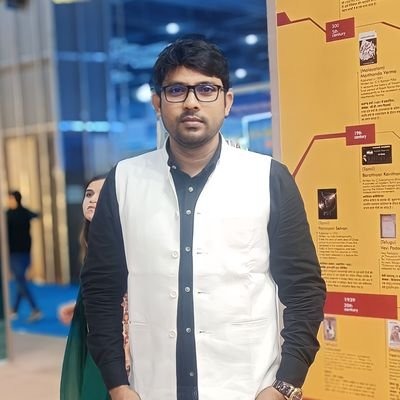Column
By Dr Nisar Ahmed Siddiqui
In today’s interconnected world, wars are no longer fought only with guns, missiles, and soldiers. A new battlefield has emerged, one that is invisible yet dangerously potent: the digital realm. Here, misinformation replaces bullets, fake narratives substitute for grenades, and armies of bots wage psychological warfare. India, as one of the world’s largest democracies and fastest-growing economies, finds itself a prime target of this sophisticated form of cyber terrorism.
A recent investigation by the research body Digital Forensics Research and Analytics Center (DFRAC) has laid bare how a network of social media accounts and websites has been meticulously engineered to malign India’s global image. This is not a spontaneous outpouring of anger or a few disjointed voices of dissent. It is a coordinated, cross-border campaign designed to project India as unstable, oppressive, and divisive. In short, it is weaponized propaganda aimed at weakening India from within and isolating it abroad.
Lies in the Age of Virality
The propaganda playbook is simple yet devastating: repeat a lie often enough, and it becomes accepted as truth. In the age of social media, where speed matters more than accuracy, misinformation spreads like wildfire. The DFRAC report reveals nine key accountssuch as “Deep State Press,” “Neon White Cat,” “Indian Invasion,” and “Codex India” which have been systematically pumping out anti-India narratives.
Their methods are disturbingly calculated. Sensitive incidents, such as communal clashes or diplomatic disputes, are amplified and distorted to appear as deliberate state actions. Memes, edited clips, and AI-generated images are injected into online discourse to confuse, provoke, and polarize. A killing arising from a personal dispute becomes a symbol of “state-sponsored violence.” A visa policy update is twisted into “ethnic cleansing of immigrants.” These distortions are then circulated across platforms, copied and reposted by allied accounts, creating the illusion of widespread global consensus.
This digital machinery thrives on two psychological levers fear and resentment. By portraying Indians abroad as “job stealers” and “frauds,” accounts like “Neon White Cat” and “Indian Invasion” aim to stoke resentment against India’s skilled diaspora. Simultaneously, fake media handles such as “Deep State Press” attempt to paint India as a hegemon conspiring against global peace, tapping into fears of India’s rise.
Cross-Border Conspiracies
What makes this campaign especially dangerous is its cross-border orchestration. While some accounts originate in Western nations like the United States and New Zealand—often linked to separatist elements pushing agendas like Khalistan—others have connections to Bangladesh. Handles such as “Intellectual Caveman” and “Lara” amplify divisive narratives by mocking Indian traditions, denigrating cultural practices, and spreading falsified reports that target the unity between India and its neighbors.
This reveals an uncomfortable truth: the propaganda against India is not just homegrown discontent spilling into cyberspace. It is a deliberate attempt by foreign actors and hostile networks to meddle in India’s internal cohesion and external reputation. The involvement of figures like Ravinder Singh Johal, associated with Khalistani extremist Gurpatwant Singh Pannun, underscores the seriousness of this campaign. When fringe separatist movements find digital platforms to amplify their cause, they acquire a dangerous reach far beyond their actual strength on the ground.
Information Warfare: A Threat to Democracy
Why should Indians be concerned about a handful of trolls and fake accounts? Because in the age of hybrid warfare, narratives can be more lethal than bombs. Information warfare can:
Erode social trust: By deepening religious, regional, and caste divides, digital propaganda weakens the very fabric of India’s pluralistic democracy.
Damage India’s global reputation: False stories about human rights violations or “ethnic cleansing” can influence policymakers abroad, harm trade negotiations, and isolate India diplomatically.
Target the diaspora: Indian professionals abroad are unfairly branded as fraudsters or infiltrators, damaging the credibility of one of India’s greatest sources of soft power.
Undermine governance: By spreading conspiracy theories about India’s leaders and policies, propaganda campaigns aim to delegitimize institutions and sow mistrust in government.
The danger is compounded by the use of advanced technology. Deepfakes, AI-generated content, troll armies, and bot-driven hashtag campaigns ensure that misinformation is no longer easily distinguishable from fact. When falsehoods are dressed as “news” and presented with slick graphics, they can sway even discerning minds.
The Silent Victims: Indians Abroad
Perhaps the most troubling aspect of this campaign is its direct targeting of Indians living abroad. Social media handles routinely call for “mass deportations” of Indians from countries like Canada, the UK, and the US. This vilification not only endangers individual immigrants but also undermines India’s reputation as a trusted contributor to the global workforce.
Consider the Indian IT sector, a pillar of India’s soft power. Accounts like “Deep State Press” trivialize Indian tech professionals as “clerks” and accuse them of “stealing jobs.” Such narratives are not only baseless but also dangerous—they fuel xenophobia abroad and expose Indian workers to hostility.
Responding to the Digital War
India cannot afford to treat this as just another nuisance of the internet age. This is a war albeit one fought in pixels and hashtags. The first step is recognition: understanding that misinformation campaigns are deliberate attacks on national security.
Second, there must be an investment in digital literacy. Citizens should be equipped to identify fake news, recognize propaganda tactics, and avoid becoming unwitting amplifiers of malicious narratives.
Third, global cooperation is crucial. Just as nations collaborate against terrorism, they must also collaborate against cyber terrorism. Host governments should be engaged diplomatically to hold accountable those spreading propaganda from foreign soil. Platforms like X, Facebook, and Instagram must also be compelled to act faster and more transparently against coordinated inauthentic behavior.
Lastly, India needs to develop its own counter-narratives. Silence in the digital space is surrender. By proactively showcasing India’s achievements, diversity, and democratic resilience, the country can reclaim the narrative.
Propaganda may be intangible, but its consequences are real. It can weaken social bonds, incite hatred, and tarnish reputations built over decades. For a nation like India—diverse, democratic, and increasingly influential—the stakes are high. The digital frontline is as critical as the military frontier, and losing ground here could have devastating ripple effects across society and diplomacy.
The war against anti-India propaganda must be fought with facts, technology, and vigilance. Because in this era, safeguarding the truth is not just a moral duty—it is a matter of national security.
(The Author is a Journalist associated with DFRAC and the views expressed in the article are his only).








